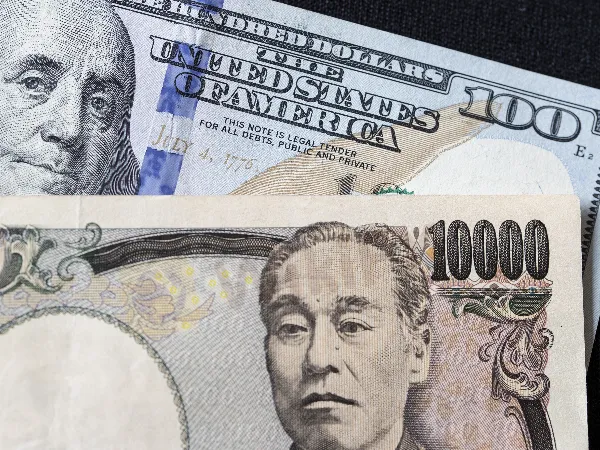简体中文
繁體中文
English
Pусский
日本語
ภาษาไทย
Tiếng Việt
Bahasa Indonesia
Español
हिन्दी
Filippiiniläinen
Français
Deutsch
Português
Türkçe
한국어
العربية
Bank of Japan (BoJ) Preview: Monetary Policy to Hold Steady
Abstract:BANK OF JAPAN (BOJ) PREVIEW – TALKING POINTS
Bank of Japan unlikely to change monetary policy stance this week
Focus on LDP leadership vote as candidates pledge fiscal expansion
Nikkei 225 inching upward, USD/JPY still locked in a familiar range

BOJ MEETING EXPECTED TO DELIVER LITTLE SURPRISE
The BoJ monetary meeting may be expected to deliver few surprises this week, with the next outlook report to come only at the October gathering. Consensus expectations continue to point towards the BoJ keeping in place its target of -0.1% for short-term rates and 0% for the 10-year bond yield, under its negative interest rate policy (NIRP) and yield curve control (YCC).
With elevated Covid-19 cases in the summer, the expected uplift in consumer spending based on pent-up demand did not materialise in August. The latest manufacturing PMI data saw a tick lower to 52.7 from the previous 53.0, while the services PMI gauge saw a deeper plunge into contractionary territory to 42.9. Both are largely by-products of supply chain disruptions and Covid-19 resurgence in the region, which may be highlighted by the BoJ as downside risks to economic growth. Therefore, the central bank may refrain from any policy tightening, suggesting that accommodative policies are likely to remain for an extended period.

That said, with falling Covid-19 cases and an improving vaccination rate over recent weeks, plans to loosen virus restrictions in Japan are in the pipeline. The BoJ is likely to reiterate expectations that economic recovery will pick up pace once Covid-19 risks abate, underpinned by accommodative financial conditions and an expected increase in business fixed investment. That will leave any further easing unwarranted for now. Inflationary pressuresare also of little concern for the central bank. The latest core CPI in July registered at -0.2% year-on-year. That is a far cry from the BoJ inflation target of 2%, which is not expected to be reached before 2023.
As the ruling LDP party's leadership vote looms, all three contenders have floated proposalsfor an economic stimulus package. Accommodative monetary policy is expected to complement the more expansive fiscal stance to come, as highlighted by BoJ Governor Haruhiko Kuroda. The central bank‘s approach to ETF purchases – another pillar of stimulus – may also remain for now after officials adopted a more flexible framework in March to ensure the program’s sustainability.
NIKKEI 225 INDEX NEARING KEY RESISTANCE
The Nikkei 225 index has broken above the upper trendline of its descending triangle pattern back in early September, signalling a shift in sentiments to the upside. Near-term price action seems to trade within an ascending channel pattern, with the key resistance level at 30,700 next to watch. Currently, the index is being supported by the lower trendline of the channel pattern at the 30,200 level, which also coincides with a previous resistance-turned-support horizontal level.

USD/JPY LARGELY RANGE-BOUND
On the four-hour chart, the USD/JPY has been range-bound over the past month, currently trading near the lower base of a rectangle pattern at 109.53. This level also coincides with the Fibonacci 23.6% retracement level, reinforcing it as a line of support. Near-term, the currency pair has broken below an upward trendline connecting higher lows. If the 109.53 level fails to hold, the pair may see a move lower to the 109.00 level next.


Disclaimer:
The views in this article only represent the author's personal views, and do not constitute investment advice on this platform. This platform does not guarantee the accuracy, completeness and timeliness of the information in the article, and will not be liable for any loss caused by the use of or reliance on the information in the article.
Read more

Weekly Fundamental Gold Price Forecast: Hawkish Central Banks a Hurdle
WEEKLY FUNDAMENTAL GOLD PRICE FORECAST: NEUTRAL

Gold Prices at Risk, Eyeing the Fed’s Key Inflation Gauge. Will XAU/USD Clear Support?
GOLD, XAU/USD, TREASURY YIELDS, CORE PCE, TECHNICAL ANALYSIS - TALKING POINTS:

British Pound (GBP) Price Outlook: EUR/GBP Downside Risk as ECB Meets
EUR/GBP PRICE, NEWS AND ANALYSIS:

Dollar Up, Yen Down as Investors Focus on Central Bank Policy Decisions
The dollar was up on Thursday morning in Asia, with the yen and euro on a downward trend ahead of central bank policy decisions in Japan and Europe.
WikiFX Broker
Latest News
The Withdrawal Trap: How Scam Brokers Lure Victims into Paying More
FCA to Investors: Think Twice Before Trusting These Brokers
Trump\s tariffs: How could they affect the UK and your money
Trump gambles it all on global tariffs he\s wanted for decades
TradingView Brings Live Market Charts to Telegram Users with New Mini App
Trump tariffs: How will India navigate a world on the brink of a trade war?
Interactive Brokers Launches Forecast Contracts in Canada for Market Predictions
Authorities Alert: MAS Impersonation Scam Hits Singapore
IG Group Acquires Freetrade for £160M to Expand UK Investment Market
U.S. March ISM Manufacturing PMI Released
Currency Calculator







